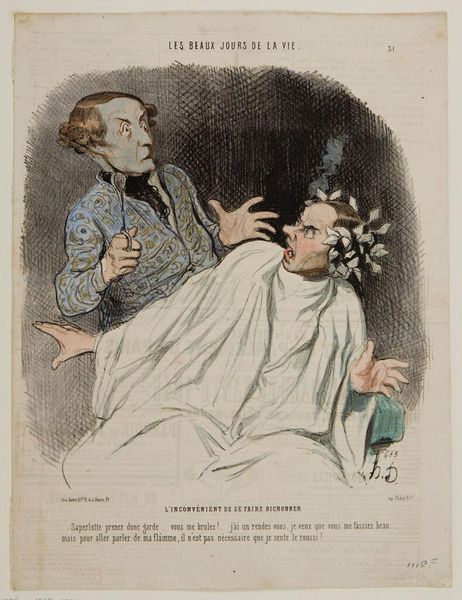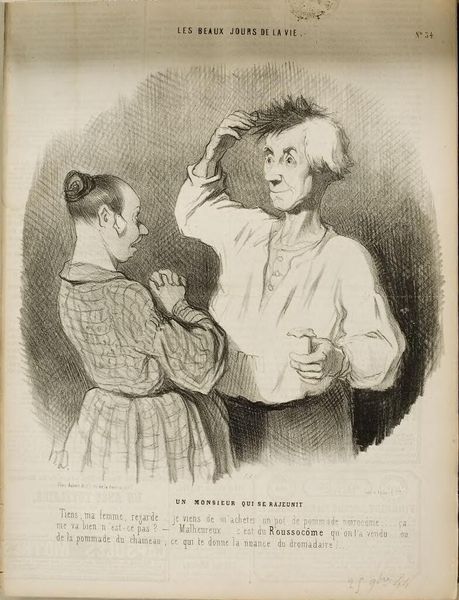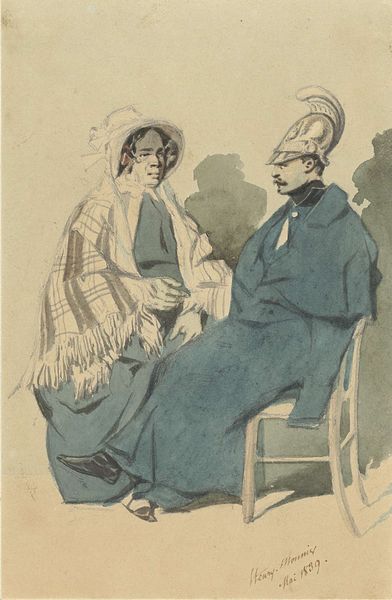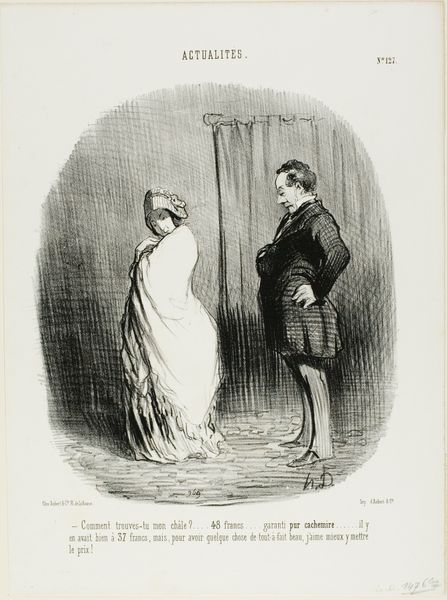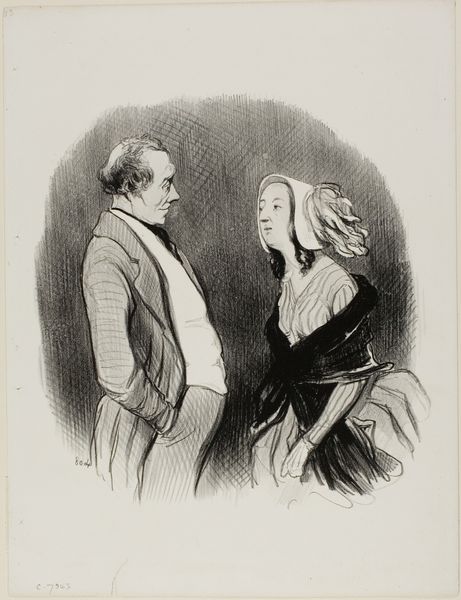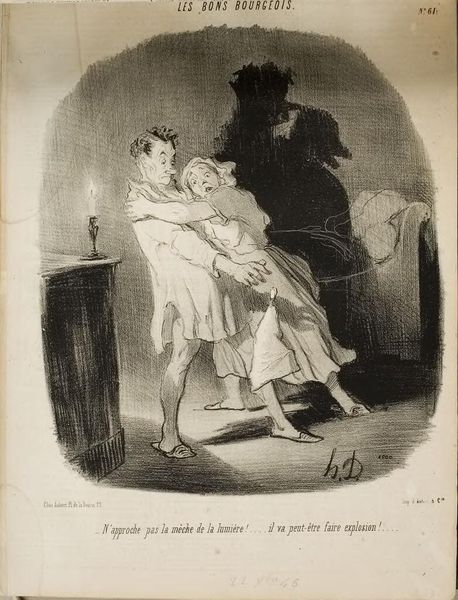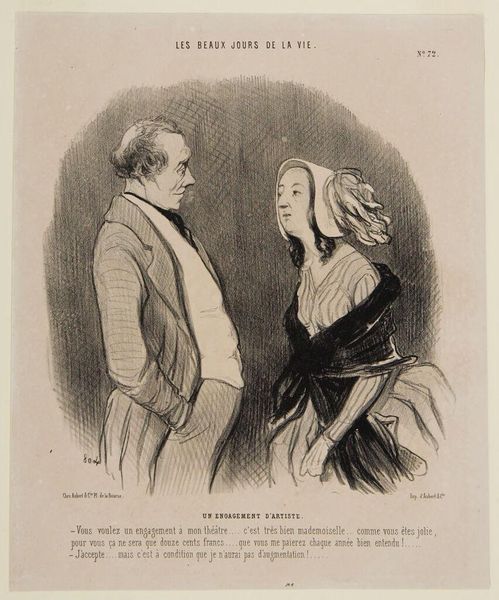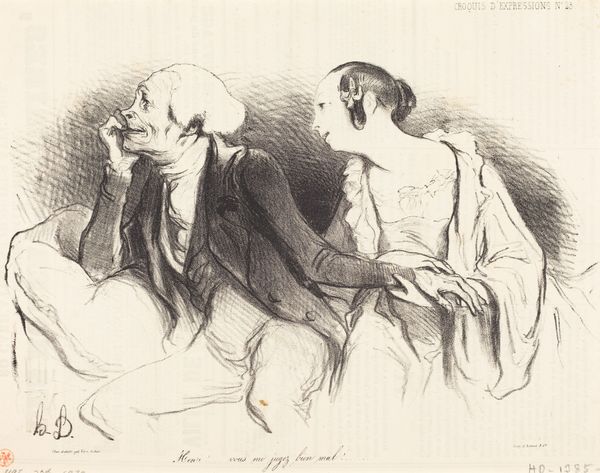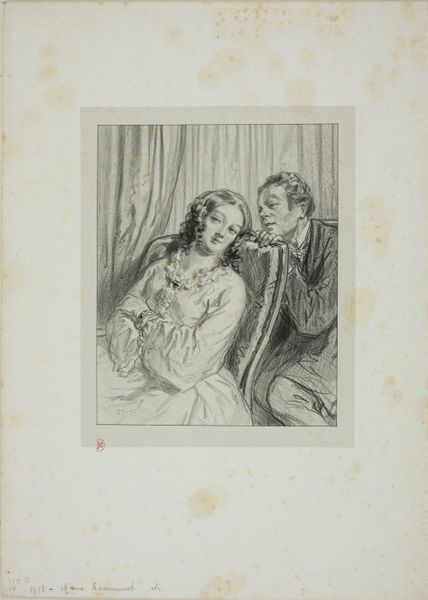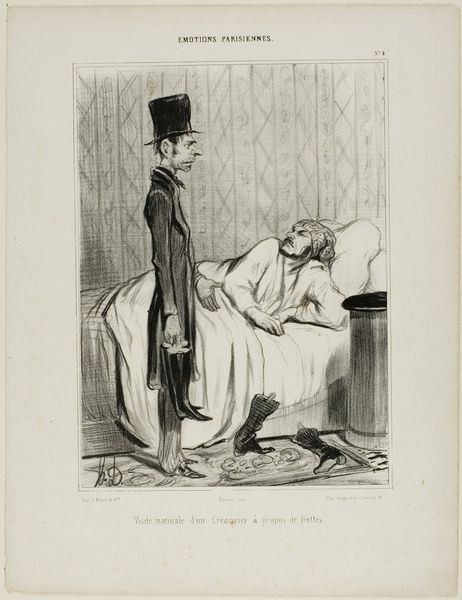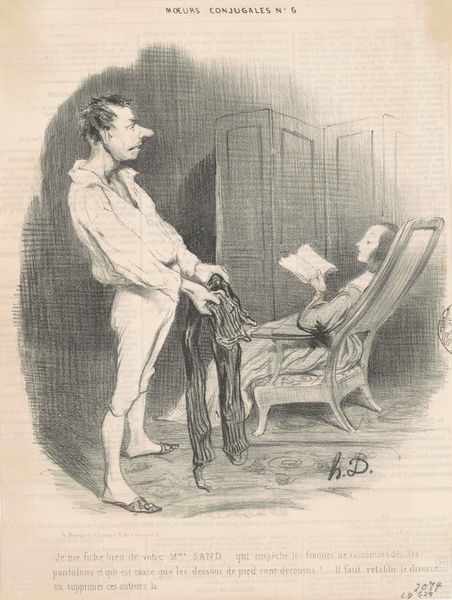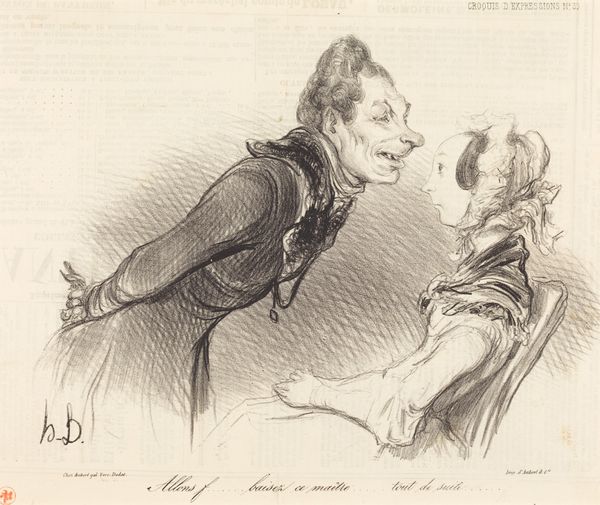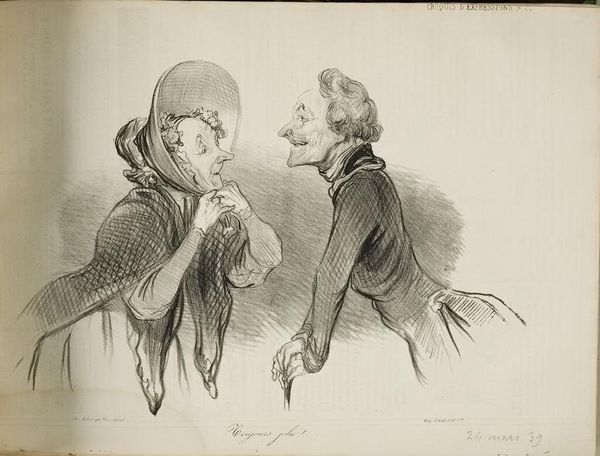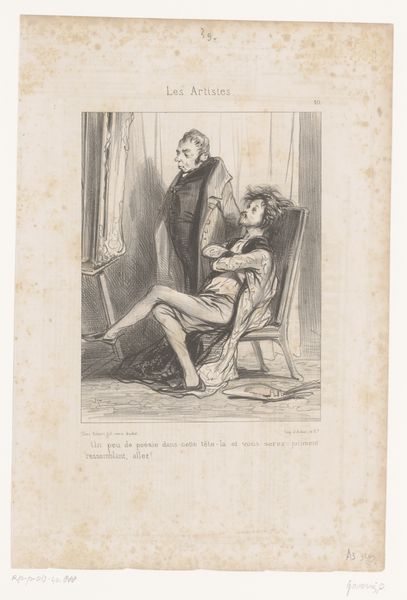
The Inconvenience of Having His Hair Curled. “Oh blast.... look here, watch out... you are burning me.... I am meeting someone, and I want you to make me look good....... but in order to declare my burning passion, I don't need to smell scorched!,” plate 31 from Les Beaux Jours De La Vie 1844
0:00
0:00
drawing, lithograph, print, paper
#
portrait
#
drawing
#
lithograph
# print
#
caricature
#
paper
#
pencil drawing
#
romanticism
#
genre-painting
Dimensions: 245 × 232 mm (image); 340 × 258 mm (sheet)
Copyright: Public Domain
Editor: This is "The Inconvenience of Having His Hair Curled," a lithograph by Honoré Daumier from 1844. It definitely strikes me as satirical. The figures are exaggerated, almost grotesque. What do you see in this piece? Curator: Ah, yes! Daumier masterfully captures a tension we see mirrored throughout history. Look closely at the symbols: the elaborate attire, the implication of vanity, juxtaposed with the very real pain and anxiety etched on their faces. Isn’t it a powerful commentary on the anxieties underpinning societal performances? Editor: Absolutely! The contrast between wanting to appear perfect for a meeting and the actual discomfort seems like Daumier is poking fun at social conventions. What about the specific symbols used— the curling iron, the scorched hair—do they have deeper cultural meanings? Curator: Precisely! The curling iron itself becomes an instrument of torture in a way, a tool of societal pressure. Burnt hair might represent a sacrifice for beauty. Are they really that different from the rituals we partake in now, promising transformation and invoking status? How has visual culture created rituals for beauty and self-improvement that seem more important than physical pain or economic realities? Editor: That’s a great point! I hadn’t thought about the rituals that way. This image speaks volumes about how appearances can dominate our lives. Curator: Indeed. And consider the power of the artist to expose these tensions, offering not just critique, but a mirror reflecting our collective, and often absurd, pursuit of beauty. I think it prompts reflection on not just individual behaviours, but structural issues around cultural expectations. Editor: I've definitely learned a lot about looking at the work critically, and thinking about the symbolic implications within cultural practices, like a funhouse mirror. Curator: That’s the power of art history, isn't it? Connecting seemingly disparate dots and making tangible something previously unseen.
Comments
No comments
Be the first to comment and join the conversation on the ultimate creative platform.
